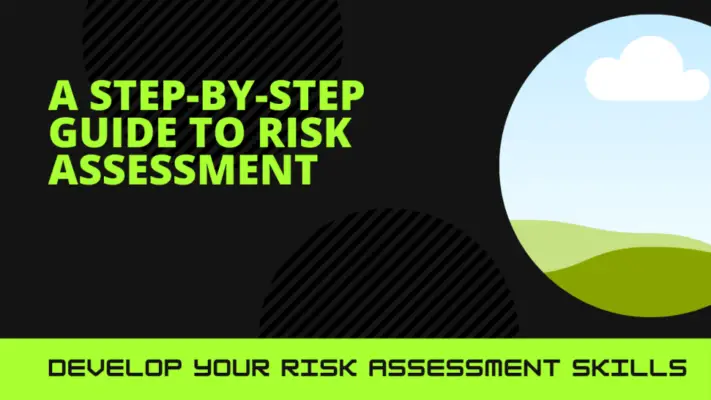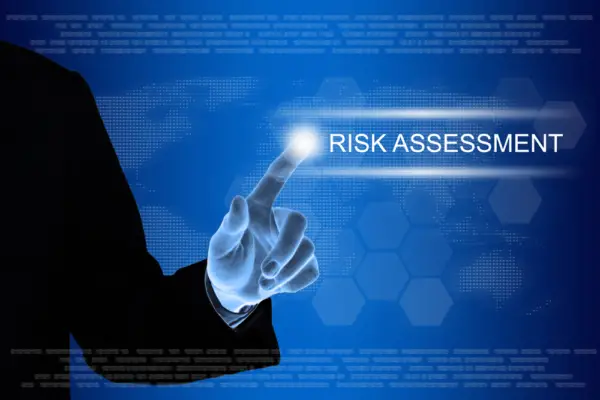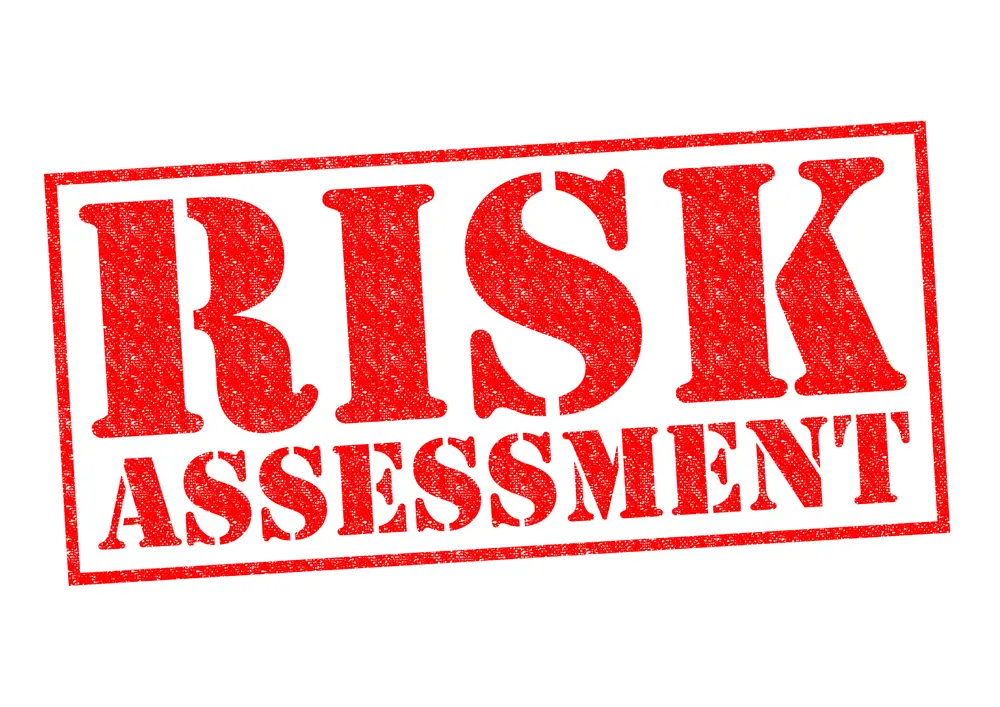A risk assessment matrix is a tool that can be used to simplify this process and help organizations make informed decisions about managing risks. A risk assessment matrix is an organized way of visualizing and analyzing risks based on their likelihood and severity.
Risk assessment is one such approach that helps in identifying potential hazards and evaluating the probability of their occurrence.
It provides a structured framework for assessing risks, assigning priorities, and identifying appropriate mitigation strategies.
In this article, we will explore the importance of risk management, how a risk assessment matrix works, its various components, benefits of using one, and how organizations can implement it successfully.

Understanding the Importance of Risk Assessment
The significance of evaluating potential hazards and taking measures to prevent or mitigate their impact cannot be overstated in ensuring the safety and well-being of individuals and organizations.
Risk assessment is a crucial tool used by businesses, governments, and other institutions to identify potential risks, evaluate their likelihood, and determine the appropriate measures to reduce or eliminate them.
This process involves identifying various types of risks that could affect an organization’s operations or cause harm to its stakeholders. There are several types of risks that organizations face daily.
These may include physical hazards such as accidents or natural disasters, economic risks such as financial losses due to market fluctuations or regulatory changes, reputational risk associated with negative publicity or legal action against the organization, operational risk arising from inadequate processes or systems within the organization, among others.
It is essential to identify all these potential risks before they occur so that appropriate steps can be taken to minimize their impact on the organization. Examples of risk assessments include analyzing workplace safety procedures to ensure employee safety while working with hazardous materials; conducting environmental assessments for a new construction project; evaluating cybersecurity protocols for an online business; assessing supply chain vulnerabilities in case of disruptions caused by natural disasters.
How a Risk Assessment Matrix Works
How does the process of evaluating potential hazards and identifying their corresponding levels of significance function in a systematic manner? Risk Assessment matrix is a tool used to assess risks based on the probability and severity of their impact.
The matrix has two axes, one for the likelihood of occurrence and another for the severity or consequence.
To better understand how a risk assessment matrix works, here are some examples of its application:
First, it helps organizations prioritize which risks to address first by focusing on those with high probability and severity levels.
Second, it assists in determining appropriate controls or measures to mitigate identified risks.
Lastly, it provides an objective framework for decision-making by providing quantifiable data that can be used to justify priorities.
However, there are also limitations to using a risk assessment matrix. One limitation is that it relies heavily on subjective assessments of the likelihood and severity criteria.
Additionally, there may be discrepancies between individuals’ understanding of probability and consequence due to varying interpretations or experiences.
Despite these limitations, when applied correctly and with careful consideration, a risk assessment matrix can be an effective tool in managing potential hazards within an organization.
Components of a Risk Assessment Matrix
Breaking down potential hazards into likelihood and consequence categories, a tool can be created to help organizations prioritize risks for mitigation. This is known as a risk assessment matrix, which is designed to identify and evaluate the potential threats that may impact an organization’s operations.
The matrix typically consists of two axes: probability analysis and risk rating. The probability analysis axis examines the likelihood of a particular event occurring, usually on a scale from low to high. It takes into account historical data, industry trends, expert opinions, and other relevant factors to determine the chances of the event happening.
The risk rating axis evaluates the severity of consequences if that event occurs, also ranging from low to high. This includes assessing financial loss, physical damage, legal implications or reputational harm caused by the event.
Together these two components create a visual representation of risks organized in priority order based on their level of threat to an organization’s operations. Businesses can better allocate resources such as time and money towards mitigating higher-risk areas first before addressing those with lower associated risks.
Ultimately it enables organizations to make informed decisions when it comes to managing their overall risk exposure while taking proactive steps towards minimizing any potential losses or damages that may arise from future events or incidents.

Benefits of Using a Risk Assessment Matrix
Employing a structured approach to prioritizing potential threats can aid organizations in better allocating resources towards mitigating higher priority concerns and proactively minimizing any associated losses or damages.
One such approach is the use of a risk assessment matrix, which allows organizations to identify, evaluate and prioritize risks based on their likelihood of occurrence and potential impact. This tool provides several benefits that make it an essential component of any organization’s risk management strategy.
The following are some benefits of using a risk assessment matrix:
– Provides clarity: By breaking down risks into smaller components, the matrix offers clarity on how each risk affects the organization’s operations. It highlights areas that require immediate attention and those that can be addressed later.
– Enhances decision-making: The matrix enables organizations to make informed decisions by providing a clear picture of the risks they face. This information helps leaders determine which risks require more significant investment in terms of mitigation measures.
– Ensures consistency: The use of a standardized approach ensures consistency when evaluating and prioritizing risks across different departments within an organization.
Its limitatiosn includes for instance, relying solely on this tool without considering other factors may lead to overlooking critical risks.
Additionally, real-life examples have demonstrated that assessing probabilities and impacts accurately may be challenging due to uncertainty surrounding certain events’ occurrence or magnitude.
The use of a risk assessment matrix has many advantages for organizations seeking to manage their exposure to various risks effectively. Nonetheless, leaders must recognize its limitations while implementing alternative approaches where necessary.
Adopting an all-inclusive approach that considers other factors beyond just probability and impact is vital for effective handling of organizational risks.
Implementing a Risk Assessment Matrix in Your Organization
The implementation of a structured approach to prioritizing potential threats can aid organizations in better allocating resources towards mitigating higher priority concerns and proactively minimizing any associated losses or damages.A risk assessment matrix is one such tool that can be used for this purpose.
To implement a risk assessment matrix in your organization, you should start by training employees on how to use the tool effectively. This includes understanding the different risk levels and criteria used to assess them, as well as how to input data accurately.
Once employees have been trained on using the risk assessment matrix, it is important to monitor its effectiveness. Regular reviews should be conducted to ensure that the priorities set align with the organization’s goals and strategies, as well as changing external factors such as new regulations or emerging risks.
Monitoring also allows for fine-tuning of the tool based on real-world feedback from users and stakeholders.
Implementing a risk assessment matrix can help organizations make more informed decisions about resource allocation and mitigate potential losses or damages before they occur.
However, proper training and monitoring are essential components of successful implementation.

Frequently Asked Questions
What are the common mistakes to avoid when using a risk assessment matrix?
One of the most prevalent errors is relying solely on intuition rather than objective data when assessing risks. This can lead to inaccurate evaluations and ultimately ineffective risk management strategies.
Another mistake is failing to update the matrix regularly, which can result in outdated information and an inability to respond effectively to emerging risks.
To avoid such pitfalls, it’s crucial to follow best practices when using a risk assessment matrix, such as involving multiple stakeholders in the process and ensuring all relevant data is collected and analyzed before making any decisions.
How do you determine the probability and impact of a risk in a risk assessment matrix?
Determining the probability and impact of a risk is a crucial step in conducting a risk assessment. Probability refers to the likelihood of an event occurring, while impact severity pertains to the extent of damage or harm that may result from such an event.
To determine the probability of a risk, one must consider various factors such as historical data, expert opinions, and statistical analysis.
On the other hand, assessing impact severity involves identifying potential consequences and evaluating their significance based on predetermined criteria.
It is important to note that determining risk probability and assessing impact severity should be done objectively and systematically to ensure accuracy and reliability in decision-making processes.
Can a risk assessment matrix be used for non-business related activities, such as personal decision making?
Personal applications of risk management skills are not commonly discussed, but they can be just as important as business-related risk assessments.
A risk assessment matrix is a tool that can be used to determine the likelihood and impact of potential risks. While traditionally used in a business setting, it can also be applied to personal decision making.
This approach requires objectivity and rational thinking, allowing individuals to weigh the pros and cons of various options before making a decision.
Utilizing a risk assessment matrix for personal applications can lead to better decision-making skills and ultimately mitigate potential harm.
How often should a risk assessment matrix be reviewed and updated?
It is essential to review the risk assessment matrix regularly, especially when there are changes in the environment or circumstances that may affect the risks involved.
The frequency of review will depend on the level of risk, with high-risk situations requiring more frequent reviews. Updating the matrix is also necessary as new risks emerge and old ones become less relevant.
Regular reviews and updates ensure that the matrix remains current and useful in identifying potential hazards, evaluating their impact, and implementing measures to mitigate risks effectively.
Timely and accurate reviews and updates ensure that organizations can make informed decisions based on reliable information.
Are there any legal requirements for using a risk assessment matrix in certain industries or organizations?
The use of a risk assessment matrix in certain industries or organizations may be subject to legal implications and industry standards.
For example, in the healthcare industry, the Joint Commission requires that healthcare organizations conduct regular risk assessments to identify potential hazards and take appropriate actions to mitigate them.
Similarly, in the construction industry, OSHA has established safety guidelines that require employers to assess workplace hazards and implement measures to protect workers from harm.
Failure to comply with these legal requirements may result in penalties and fines.
Furthermore, industry standards may also dictate the use of a risk assessment matrix as part of best practices for ensuring safety and minimizing liability.

Conclusion
Risk assessment is a crucial process that organizations must undertake to identify potential hazards and evaluate the likelihood of their occurrence. A risk assessment matrix is a tool used to assess and manage risks by assigning levels of severity and probability.
This matrix helps organizations prioritize risks based on their potential impact, allowing them to allocate resources effectively.
The components of a risk assessment matrix include identifying hazards, assessing the likelihood of an event occurring, determining its consequences, and assigning it a level of risk.
The benefits of using this tool are numerous, including increased awareness and understanding of potential risks, better allocation of resources, improved decision-making processes, reduced costs associated with accidents or incidents, and enhanced stakeholder confidence.
Implementing a risk assessment matrix requires commitment from all members of an organization. It involves regular monitoring and review to ensure that changes in the environment or operations are captured accurately within the framework.

Chris Ekai is a Risk Management expert with over 10 years of experience in the field. He has a Master’s(MSc) degree in Risk Management from University of Portsmouth and is a CPA and Finance professional. He currently works as a Content Manager at Risk Publishing, writing about Enterprise Risk Management, Business Continuity Management and Project Management.

